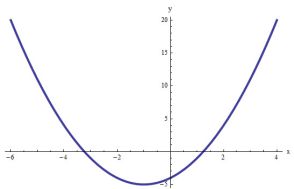Chapter 20 problem 1 Using the graphs menu, make a scatterplot of husband’s education against wife’s education
Chapter 20 problem 1
Using the graphs menu, make a scatterplot of husband’s education against wife’s education (variables husbeduc and wifeduc). Edit the chart to draw the regression line and print R 2
- Does there appear to be a linear relationship between the two variables?
- Would you characterize the relationship between as positive or negative
- From the plot, estimate the slope and the intercept.
- What’s the value of the correlation coefficient
- Describe the points that are far from the regression line.
Chapter 20 problem 2a and b
From the regression procedure, obtain the least-squares estimates for the slope and the intercept.
- Write the regression equation to predict a husband’s education from his wife’s education. What proportion of the variability in husband’s education can be explained by wife education?
- The observed value for a husband’s years of education is 14 and his wife’s 13 years. What’s the residual?
| Model Summary | ||||
| Model | R | R Square | Adjusted R Square | Std. Error of the Estimate |
| 1 | .561 a | .314 | .313 | 2.42481 |
|
||||
| ANOVA b | ||||||
| Model | Sum of Squares | df | Mean Square | F | Sig. | |
| 1 | Regression | 1635.068 | 1 | 1635.068 | 278.086 | .000 a |
| Residual | 3568.994 | 607 | 5.880 | |||
| Total | 5204.062 | 608 | ||||
|
||||||
| b. Dependent Variable: husband's education (yrs) | ||||||
| Coefficients a | ||||||
| Model | Unstandardized Coefficients | Standardized Coefficients | t | Sig. | ||
| B | Std. Error | Beta | ||||
| 1 | (Constant) | 5.341 | .504 | 10.598 | .000 | |
| wife's education (yrs) | .620 | .037 | .561 | 16.676 | .000 | |
|
||||||
Chapter 21 exercise 3
You obtain the following regression statistics for the relationship between defect rate and volume at one of your plants, you have random sample of results from 160 shifts a plant.
| Model | R | R Square | Adjusted R Square | Std. Error of the Estimate | ||||||
| 1 | .740 | .548 | .545 | 4.92 | ||||||
| Model | Sum of Squares | df | Mean Square | F | Sig. | |||||
| 1 | Regression | 4647.124 | 1 | 4647.124 | 191.717 | .000 | ||||
| Residual | 3829.839 | 158 | 24.239 | |||||||
| Total | 8476.963 | 159 | ||||||||
| Model | Unstandardized Coefficients | Standardized Coefficients | t | Sig. | ||
| B | Std. Error | Beta | ||||
| 1 | (Constant) | -97.073 | 7.819 | .740 | 50.995 | 0.00 |
| VOLUME | .027 | .002 | 13.846 | 0.00 | ||
- What are the null and alternative hypotheses
- What is the population of interest? What is the sample
- On the basis of the output, what can you conclude about the null hypothesis
- Can you reject the null hypothesis that the slope is 0
- Can you reject the null hypothesis that there is no linear relationship between the dependent and the independent variables?
- Can you reject the null hypothesis that the population correlation coefficient is 0?
- What would you predict the defect rate to be on the day when the volume is 4200 units? What would you predict the average defect rate to be for all days with production volumes 4200?
- In what way the two estimates of the defect rate in question 3 g differ( calculation not required).
Chapter 21 problem 1abcde
Run a regression equation to predict father’s education from mother’s education (variables paeduc and maeduc). Include 95% confidence intervals for the slope and intercept. Save the standard error of the mean prediction.
- Write the linear regression to predict father’s education from mother’s education
- Based on the results of the linear regression can you reject the null hypothesis that there is no linear relationship between father’s and mother’s education.
- What proportion of the variability in mother’s education is explained by father’s education?
- How can you tell from the slope if the correlation coefficient between the two variables is positive or negative?
- What can you conclude about the population correlation coefficient based on what you know about the slope? Can you reject the null hypothesis that the population correlation coefficient is 0?
- Based on the 95% confidence interval for the slope, can you reject the null hypothesis that the population value for the slope is 1? Explain
Chapter 21 2 a and b
Based on the regression equation developed in question 1, answer the following:
- What do you predict for father’s education for a person who has a mother with 12 years of education?
- What do you predict for average father’s education for all people who have a mother with 12 years of education
Solution:

Deliverable: Word Document


![[See Steps] Assignment 12 Instructions: Use the RENAL.sav file [See Steps] Assignment 12 Instructions: Use the](/images/solutions/MC-solution-library-81019.jpg)
![[Solution] Do the two tests (Stroop and FDT) differ taking into [Solution] Do the two tests (Stroop and](/images/solutions/MC-solution-library-81020.jpg)
![[See Steps] DIRECTIONS Answer the items presented below. In some [See Steps] DIRECTIONS Answer the items presented](/images/solutions/MC-solution-library-81021.jpg)
![[See Steps] A sociologist is interested in the number of children [See Steps] A sociologist is interested in](/images/solutions/MC-solution-library-81022.jpg)

